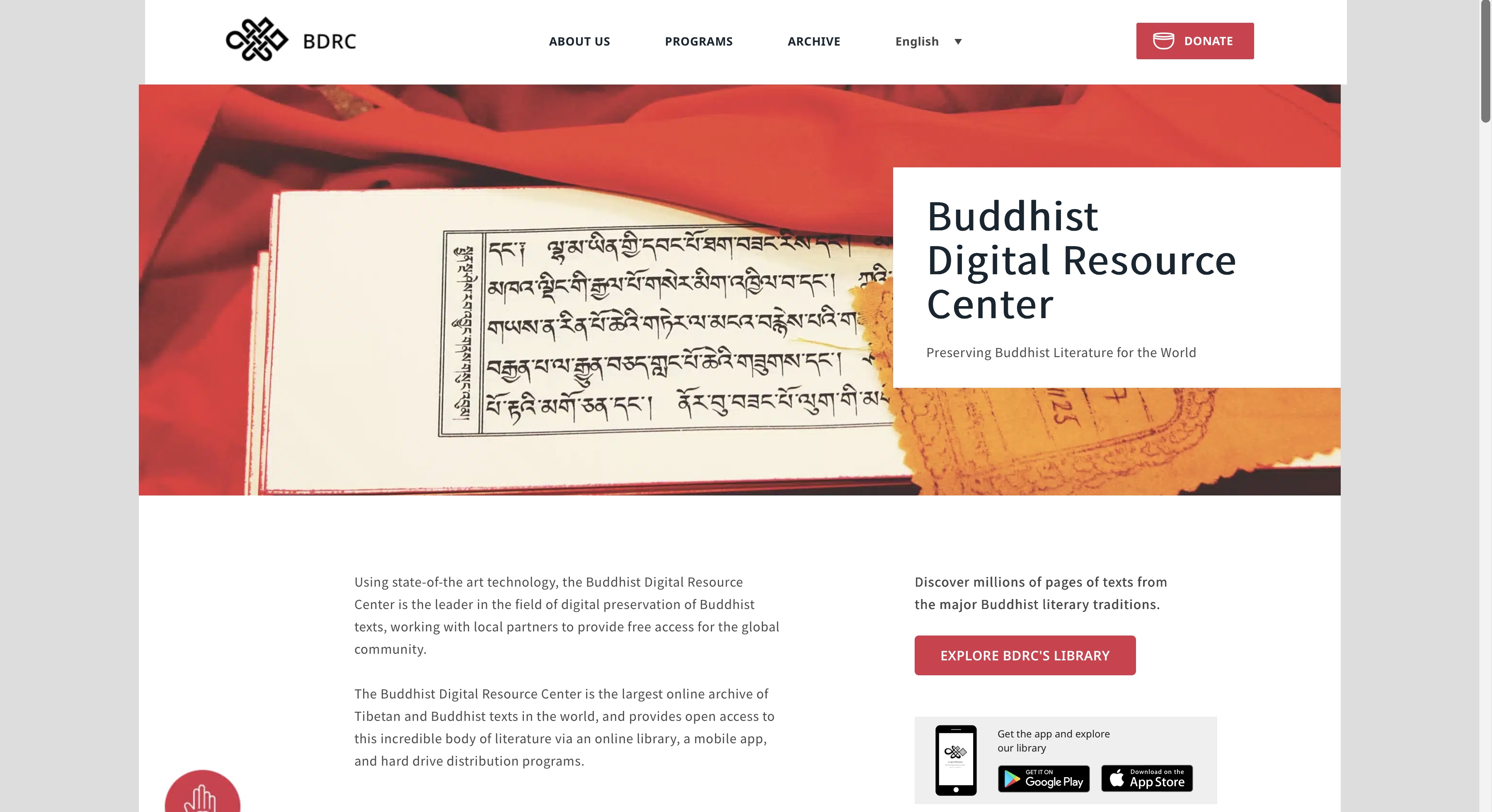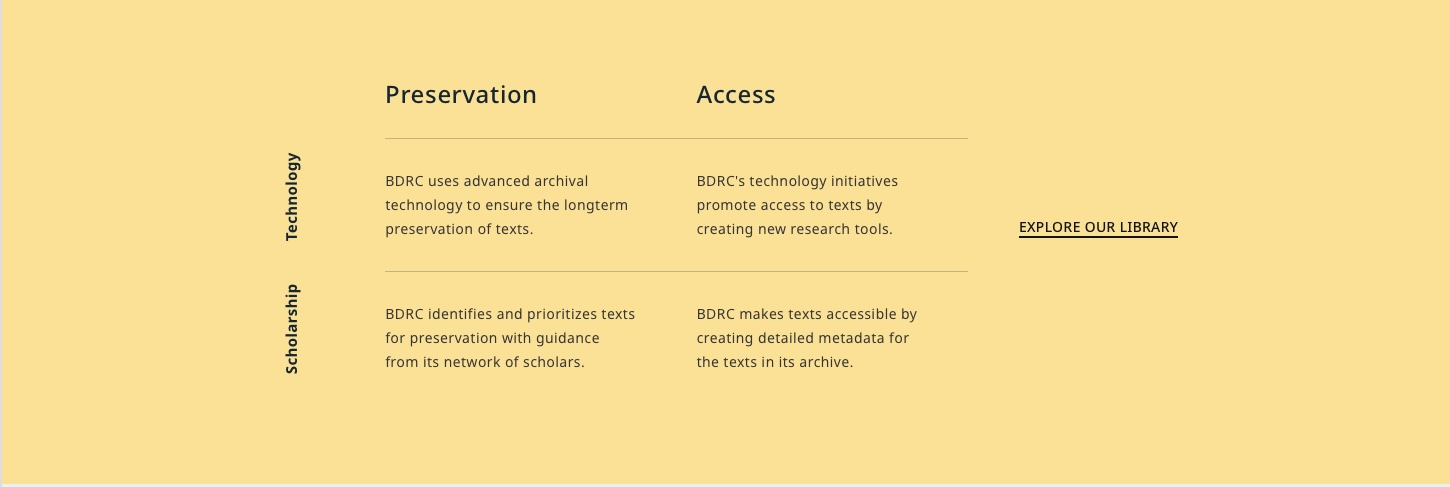Digitizing the Dharma – Introducing BDRC and the Digital Preservation of Tibetan Buddhist Texts

As part of my final project in Digital Humanities, I am writing a five-part blog series exploring the digitization of Tibetan Buddhist texts. This topic has shaped not only my academic research, but also my personal journey at the intersection of tradition and technology. It is the continuation of the work I began in my master’s thesis, where I examined the motivations, challenges, and cultural dynamics behind digitization efforts through in-depth interviews.
One organization that stood out throughout my thesis, but that I was unable to include directly due to the lack of an interview, was the Buddhist Digital Resource Center (BDRC). In fact, the absence of a direct exchange with BDRC during my research only increased my curiosity. That is why I have chosen to dedicate my final Digital Humanities project to BDRC: to dive deeper into its history, mission, technological strategies, and cultural impact.
Why BDRC?
My thesis showed that digitization is not just a technical task. It is a cultural and ethical one. It involves navigating questions of access, authority, identity, and preservation, and institutions such as BDRC embody these complexities in their entirety. Looking through BDRC’s public news and project updates, it becomes clear how the organization continuously enhances access to rare texts, develops cutting-edge digital tools, and partners with communities and institutions to safeguard and share Tibetan culture globally.
“The Buddhist Digital Resource Center is a nonprofit organization dedicated to seeking out, preserving, documenting, and disseminating Buddhist literature. We provide scholars, translators, Buddhist practitioners, and the general public with access to an unparalleled collection of Buddhist texts. Joining digital technology with scholarship, BDRC ensures that the cultural treasures of the Buddhist literary tradition are secure and accessible for generations to come.” — Buddhist Digital Resource Center
BDRC began as the Tibetan Buddhist Resource Center (TBRC) in 1999, founded by the late E. Gene Smith. After decades of working with Tibetan texts at the Library of Congress, Smith sought to ensure that the vast literary heritage of Tibet, threatened by displacement and globalization, would not be lost. What made his approach unique was his early embrace of digital tools, not just for storage, but for equitable access. His goal was simple but revolutionary: to make Tibetan texts available to everyone, from monks in exile to scholars across the world.
From TBRC to BDRC: Expanding the Mission
Since 2016, the center has grown beyond its original Tibetan focus to include Buddhist texts in Pali, Sanskrit, Chinese, and other languages. This evolution reflects a broader trend I observed in my thesis: the digitization of Buddhist texts is being shaped by an increasingly diverse group of actors with different cultural, educational, and technological backgrounds. BDRC’s shift mirrors this landscape and serves as a perfect case study for how digital tools can serve both scholarly and spiritual traditions. While acknowledging this broader scope, this blog series will primarily focus on BDRC’s work with Tibetan Buddhist texts, in order to build on the core themes and insights of my earlier research.
Technology Meets Tradition: BUDA
BDRC’s programs fulfill its mission by preserving endangered Buddhist manuscripts, developing digital tools for access and research, and supporting the repatriation and global engagement with Buddhist literary heritage.

One of the most impactful outcomes of this mission is BUDA (Buddhist Universal Digital Archive) - BDRC’s flagship digital platform. BUDA provides access to more than 27 million pages of Buddhist texts. It is more than just a digital library - it is a rich metadata ecosystem that supports nuanced textual analysis, multilingual research, and long-term preservation. BUDA represents an ideal example of how digital infrastructure can be used not simply for information storage, but for cultural transmission.
From Thesis to Blog
In my master’s thesis, I initially assumed that digitization efforts were primarily driven by Western institutions. As I engaged with Tibetan buddhist scholars, librarians, and digital preservation specialists, I came to recognize how significantly Tibetan communities and institutions themselves shape these initiatives. This realization marked an important shift in my own perspective and became one of the most meaningful outcomes of my research.
At the same time, the contributions of non-Tibetan organizations remain essential - none more so than the BDRC. Even though I was not able to include BDRC as a case study in my thesis due to the absence of a direct interview, its presence was unmistakable. As a pioneering force and arguably the most influential organization in the field, BDRC has shaped how Tibetan texts are digitized, catalogued, and made accessible. Its work continues to set standards and provide infrastructure that many others, Tibetan and non-Tibetan alike, build upon. That is why this series begins here: to explore BDRC’s role at the heart of the digital preservation of Tibetan Buddhist texts, and to reflect on the broader implications of its work at the intersection of technology, tradition, and global access.
What’s Next?
This opening post lays the foundation for the series ahead. In the next entry, I will turn to BUDA, the platform that powers BDRC’s digital library. I will unpack how BUDA functions: Not just as a technical infrastructure, but as a framework for organizing, linking, and sharing Tibetan texts in a way that supports long-term preservation, scholarly research, and open access. Its design reflects a thoughtful balance between innovation and cultural sensitivity, offering a model for how digital systems can responsibly steward complex textual traditions.
Coming up in the series:
- Digitizing the Dharma – Introducing BDRC and the Digital Preservation of Tibetan Buddhist Texts (this post)
- Buddhist Digital Archives (BUDA) in Focus - Part 1
- Buddhist Digital Archives (BUDA) in Focus - Part 2
- Innovation Guided by Cultural Sensitivity – BDRC’s Model of Responsible Digital Stewardship
- A Personal Reflection on Accessing Tibetan Buddhist Texts Digitally on BUDA
Enjoy Reading This Article?
Here are some more articles you might like to read next: